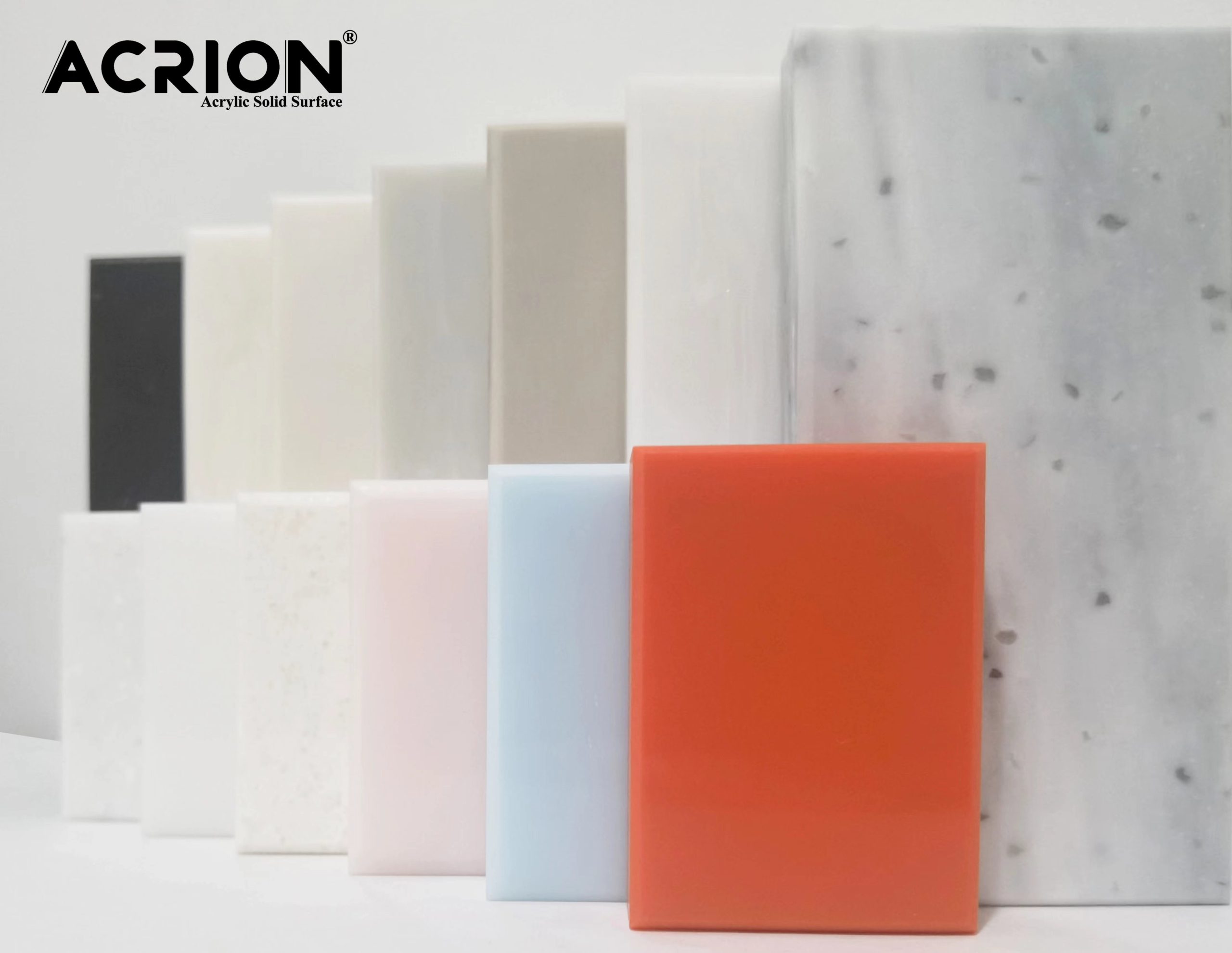The seamless splicing process principle of Kelinai countertops mainly relies on the characteristics of its materials and special splicing techniques. The following is a detailed introduction:
The material properties lay the foundation
Kelinai is an acrylic artificial stone material with unique physical and chemical properties, which provides the basic conditions for achieving seamless splicing. Its material is uniform and highly malleable, which can better integrate during the splicing process and reduce the splicing marks. Meanwhile, Kelinai material has a certain degree of flexibility and elasticity. After being spliced, it can withstand a certain external force without cracking easily, ensuring the stability and durability of the splicing.
The technological process is seamless
Precise cutting and grinding
Before splicing, the Kolinai countertop needs to be precisely cut to ensure that the dimensions of the splicing parts are accurate and error-free. This requires the use of high-precision cutting equipment, such as CNC water jet cutting machines, etc., to ensure the flatness and verticality of the cutting surface.
After the cutting is completed, carry out meticulous grinding treatment on the spliced parts. The purpose of grinding is to remove burrs and unevenness produced during the cutting process, making the splicing surface smoother and facilitating subsequent splicing and integration. When grinding, different grit sandpapers should be used step by step, from coarse sandpaper to fine sandpaper, until the spliced surface achieves a mirror-like effect.
Bond with glue of the same material
The key to seamless splicing of Kelinai countertops lies in using glue of the same material as the countertop for bonding. This kind of glue is usually liquid acrylic material, which has the same chemical composition and physical properties as the Corine countertop and can achieve true fusion.
When splicing, apply the glue evenly on the splicing surface to ensure that the glue can fully fill the gaps at the splicing parts. The application of glue needs to be well controlled in terms of thickness and uniformity. Both too thick and too thin will affect the splicing effect.
Pressure curing
After applying the glue, closely join the two Corine countertops together and apply appropriate pressure. The purpose of applying pressure is to enable the glue to better penetrate into the tiny gaps of the spliced surface and enhance the bonding strength. Special fixtures or heavy objects can be used to apply pressure to ensure that the force is evenly distributed at the spliced parts.
While applying pressure, the glue needs to be cured under certain temperature and humidity conditions. The curing time depends on the type of glue and environmental conditions, and it usually takes several hours or even longer. During the curing process, it is necessary to maintain the stability of the spliced parts and avoid interference from external forces.
Detail handling enhances quality
Trimming of the splicing area
After the glue has cured, there may be some excess glue overflowing or uneven areas at the joints. At this point, the joint area needs to be trimmed. Use sandpaper or an edge trimmer to remove the excess glue to keep the joint area smooth and consistent with the surface of the countertop.
Surface polishing
In order to make the overall effect of the Kolinai countertop more beautiful after splicing, it is necessary to carry out surface polishing treatment on the entire countertop. Polishing can make the surface of the countertop smoother and brighter, and at the same time, it can further enhance the integration at the joints, making the joint marks almost invisible.
